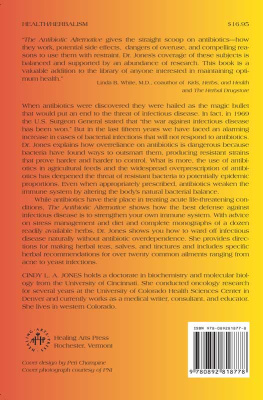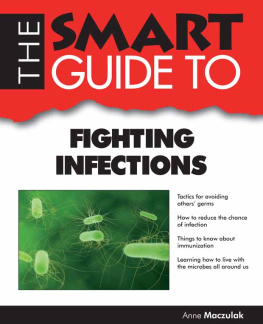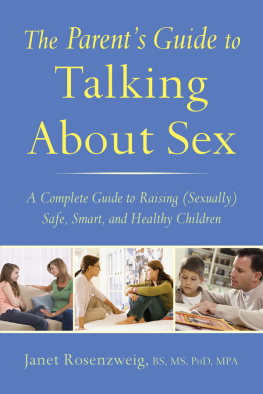Keeping Your Child Healthy in a Germ-Filled World
A JOHNS HOPKINS PRESS HEALTH BOOK
Keeping Your Child Healthy in a Germ-Filled World
A G UIDE for P ARENTS
Athena P. Kourtis, M.D., Ph.D., M.P.H.

Note to the reader: This book describes how to help prevent infections in children in general. It was not written about your child. You should obtain the services of a competent professional whenever you need medical or other specific advice.
Dr. Kourtiss work was performed outside the scope of her employment as a U.S. government employee. Her work represents her personal and professional views and not necessarily those of the U.S. Centers for Disease Control and Prevention.
2011 Athena P. Kourtis
All rights reserved. Published 2011
Printed in the United States of America on acid-free paper
2 4 6 8 9 7 5 3 1
The Johns Hopkins University Press
2715 North Charles Street
Baltimore, Maryland 21218-4363
www.press.jhu.edu
Library of Congress Cataloging-in-Publication Data
Kourtis, Athena P.
Keeping your child healthy in a germ-filled world : a guide for parents / Athena P. Kourtis.
p. cm. (A Johns Hopkins Press health book)
Includes bibliographical references and index.
ISBN-13: 978-1-4214-0211-6 (hardcover : alk. paper)
ISBN-13: 978-1-4214-0212-3 (pbk. : alk. paper)
ISBN-10: 1-4214-0211-4 (hardcover : alk. paper)
ISBN-10: 1-4214-0212-2 (pbk. : alk. paper)
1. Self-care, HealthPopular works. 2. MicroorganismsPopular works. I. Title.
RA776.95.K68 2011
613dc22 2011004100
A catalog record for this book is available from the British Library.
Illustrations by Elizabeth Allen
Special discounts are available for bulk purchases of this book.
For more information, please contact Special Sales
at 410-516-6936 or specialsales@press.jhu.edu.
The Johns Hopkins University Press uses environmentally friendly
book materials, including recycled text paper that is composed of at
least 30 percent post-consumer waste, whenever possible.
To Alexander,
and to Peter and Constantine,
the three Greats in my life!
The physician must have two special objects in view
with regard to disease, namely, to do good or to do no harm.
Hippocrates, Epidemics, fifth century BC
Contents
Preface
When you hold this book in your hands, the last thing on your mind, I am sure, is the number of germs moving from your hands to its surface. Germs are microscopic organisms present everywhere: in the air, on the ground, in water, on plants and animals, in the human body. They live in tropical and polar climates, near volcanoes and hot springs, with or without oxygen.
Since the nineteenth century, we have known that some germs cause diseasesthe infectious diseases. Around the end of the twentieth century, however, scientists began to understand that germs also cause chronic diseases, such as stomach ulcers and some types of cancer. New scientific evidence has started to connect germs with even more diseases, including atherosclerosis, diabetes, some forms of arthritis, and neuropsychiatric conditions. However, not all germs are enemies. Even though some germs cause disease in humans, animals, and plants, many of them are necessary for our health. In fact, we would not be able to exist without them.
The relationship between humans and germs is complex and fragile. They can damage our healtheven kill usbut we need them for our very existence. Since we cannot eliminate all germs (and we do not want to), how can we live healthily with them? What should we do to protect ourselves and our children from germs, without endangering our health from the harmful consequences of our protective measures? Should we clean our homes? Should we vaccinate our children? Should we use antibiotics? How about antibacterial soaps? Information piles up as the media and the Internet step in to offer (sometimes conflicting) advice.
Inspired by the questions of my little patients parents, I wrote this book to help you sift through the media information you receive daily. As a pediatrician, I have the privilege of serving my patientschildren and their familiesand I hear the questions and see the worries parents have about their childrens health. However, I also see the extent of misinformation that is circulated: some parents believe that antibiotics are a cure-all, other parents have misgivings about vaccines, and still others fall prey to the wide promotion of products and ideas with no scientific backing. As an infectious diseases specialist, I see some of the more serious cases of infectious diseases in children, as well as nosocomial infections (those acquired in the hospital) and infections caused by germs that are resistant to antibiotics. As a mother, I know firsthand what concerns parents and what information they truly need to know.
It is my mission to help educate parents on infections and their prevention as related to their childrens health. I begin with an introduction to germs to give you some background about them and their ongoing relationship with humans. The first part of this book describes what germs your children are likely to encounter through their various activities. I describe how these germs spread and multiply and how they make us sick. Understanding how germs spread and the pathways they use is the first step to preventing infections.
The second part of this book discusses the means we have today for preventing infections: new ways of practicing hygiene for ourselves and for our home, whether we should use antimicrobial soaps and cleaning products, and the very important preventive strategy offered by vaccines. also explores the proper use of antibiotics, prevention of infections during pregnancy, the benefits of breastfeeding, and whether our childrens immune systems require food supplements or herbs. Probiotics is a new and evolving field; I describe what we know about these live microorganisms that some people take to improve their health. Finally, I talk about traditional wisdom and folk remedies and whether they have any scientific merit in preventing and treating infectious diseases.
You can read this book from beginning to end or use it as a reference for specific questions that you have. I hope that it will be helpful for a new generation of parents and that it will set the foundation for carefully evaluating the information we receive and carefully handling the situations we encounter every day. By applying what you learn from this book, you can reduce the frequency of infections in your family and better understand our fragile ecological balance with microbes.
Acknowledgments
As the poet George Seferis said, Our words are children of many people. This book would not have been possible without the help of many people during the course of my studies and work. The idea for this book started from a conversation with my mother, but its foundation was laid much earlier. I owe gratitude to my parents, who encouraged me along the path of knowledge and creation; my teachers all the way from elementary school to medical school and throughout my medical and research training, who introduced me to brave new worlds; my colleagues, with whom I continue to share knowledge; and my patients and their families, who continually offer me new challenges.
To my husband and sons, who were patient and forgiving of my absences for hoursday and nightas I spent my free time writing, I extend my heart-felt thanks. My special thanks to my father, Dr. Petros Kourtis, a general surgeon, to my husband, Dr. Alexander Kessler, an infectious diseases specialist, and my colleague Dr. Andi Shane, a pediatric infectious diseases specialist, who read various parts or all of my manuscript and provided thoughtful and useful comments. Jacqueline Wehmueller, executive editor at the Johns Hopkins University Press, believed in this project from the beginning, and Rowena Rae, my enthusiastic editor, made the book much more interesting to read. Finally, to my publishing team, which made the process, despite the hard work, exciting, I express my deep gratitude.
Next page




